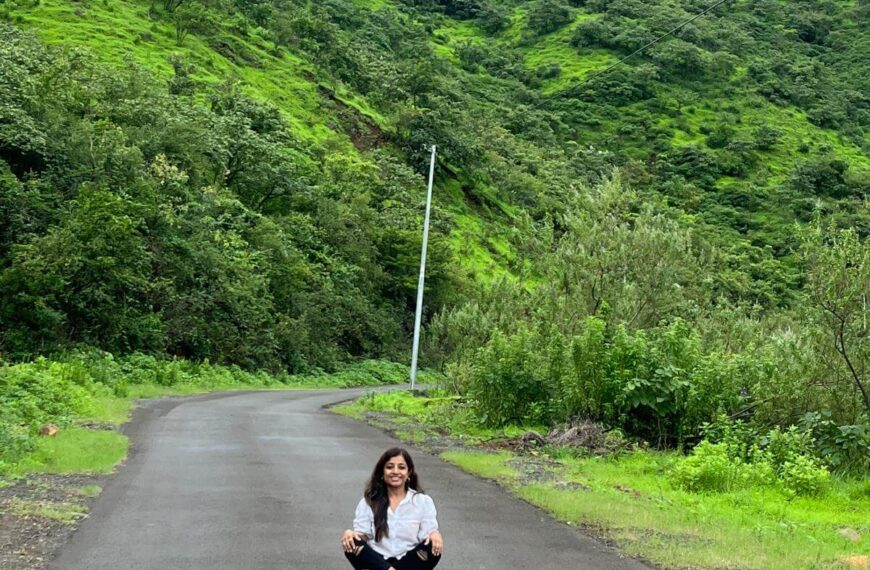Jugal Kishore Petshali, of Chitai, in Almora district, of Uttarakhand runs a museum called Uttranchal Lok Kala Evam Sahitya Sanrakshan Trust. He showed us one of the rare manuscripts of Badrinath Arti, first published, in 1846, and the person who authored it. Badrinath is one of the famous sites of Char Dham in Chamoli district of Uttarakhand. It caught us by surprise that it was composed by Muslim called Badruddin of Nandprayag. Most of us have never heard of this Arti. Archana discovered a rare truth, during one of her travels. She reveals the details, in the regular column, exclusively for Different Truths.
I had read it long time back, in one of the issues of Reader’s Digest, which kept ringing in my mind all the time and somehow changed my perspective forever.
In each of us there is a tourist, traveller or a pilgrim. A tourist will go to a place and make things interesting. A traveller will choose the road less travelled and discover interesting things. A pilgrim will discover God, who will make all the things interesting, and be fascinated by the simple, leading to abundance in life. There is a tourist, traveller and a pilgrim in all of us. My frequent hilly sojourns are always revealing, rewarding and refreshing. At times am guided to places of interest, at times chance to spot some abandoned ruins, at times connect with the silence of the nature. So am able to identify with the tourist, traveller and a pilgrim, which exists within me.
On one of such trip, I chanced to meet Jugal Kishore Petshali, of Chitai, in Almora district, of Uttarakhand. He runs a museum called Uttranchal Lok Kala Evam Sahitya Sanrakshan Trust. He showed us one of the rare manuscripts of Badrinath Arti, first published, in 1846, and the person who authored it. Badrinath is one of the famous sites of Char Dham (four pilgrimages) in Chamoli district of Uttarakhand. It caught us by surprise that it was composed by Muslim called Badruddin of Nandprayag. Most of us have never heard of this Arti even I sat down to read it and was mesmerised. Petshali hummed this wonderful Arti which says,
Pawan mand sugandh Sheetal hem mandir shobhitam,
Nikat Ganga Bahat Nirmal Shri Badrinath vishambharam
Shesh Sumiran karat nishdin dharat Dhyan Maheshwaram
Shakti Gauri Ganesh Sharad Narad Muni Uccharanam
Jog Dhyan Apar Leela Shri Badrinath Vishambharam
Indra Chandra Kuber Dhuni kar Dhoop deep prakashitam
Sidh munijan karat Jai Jai Badrinath Vishambharam
Yaksha Kinnaur karat kautuk gyan Gandharv Prakashitam
Shri Lakshmi Kamla Chanwardol Shri Badrinath Vishambharam
Kailash mein ek Dev Niranjan Shail Shikhar Maheshwaram
Rajyudhishthir karat Stuti Shri Badrinath Vishambharam
Shri Badriji ke Panch Ratna padhat paap vinashnam
Koti Theerth Bhavet punya prapyate phaldayakam
The Arti made us curious about the legend of Badrinath. Furthermore, query unravelled the story of Badrinath before us. It’s quite strange and natural for Hindu Gods and Goddesses to have limitations and vices like human beings. Therefore, Hinduism is treated as a way of life where even supernatural possess ordinary characteristics. It’s not a quest for intellectual unrest. It is a vast philosophy. One day, Lord Vishnu lying on his Sheshnaag Shaiya (serpent bed) was enjoying the worldly comforts in the company of his wife Lakshmi. Narad Muni as always gets to right places on wrong times and never abstains from commenting. He made a sarcastic remark to which Lord Vishnu retorted by retiring into Himalayan valley covered with wild berries or Badri. He came to be known as Badrinath or the Lord of Badri. He assumed the posture of Yogdhyani (yogi in meditation) and kept meditating for years. His wife Lakshmi came searching for him and begged to return to his original form to which he agreed. It’s interesting to note that Vishnu is worshipped in his Yogdhyani and Shringaric (the beauty of a family man as opposed to the yogi) form at Badrinath along with Lakshmi. How nature interferes with divine is interesting to note here, which is beautifully brought about in the following hymn:
Shanmasam daivataih Puja
Shanmasam manusaisthata
Meaning thereby that Lord is worshipped by gods for six months in his Yogdhyani form when the area is under snow blanket with utter solitude and for six months by human beings in his Shringaric form. In Shringaric form Lakshmi is placed on left side of Lord Vishnu whereas in Yogdhyani form she is seated on the right side. Vishnu and Lakshmi are not worshipped here as a couple but separate deities.
Shankaracharya found the idol of Lord Vishnu from Narad Kund on his visit to Ashta Khand. It’s a black stone statue with Lord or Nath in Padmasan (lotus) posture. Speculation is raised whether the idol is of Buddha but speculation is put to rest as Buddha is considered to be an incarnation of Lord Vishnu. Kuber or the God of wealth also has place in the temple.
However, since Shankracharya revived the temple great adherence is paid to the sanctity of rituals with Puja being performed by Namboodri Brahmins of Kerala known as Rawal.
The Lord is invoked daily by singing this beautiful Arti with very few people being aware who penned it. Divine has its unique way of telling us the strange truths of life. Ultimately, we all believe in oneness of all where all barriers transcend and supreme reality prevails.
©Archana Sharma
Photo by the author and the Internet.







 By
By
